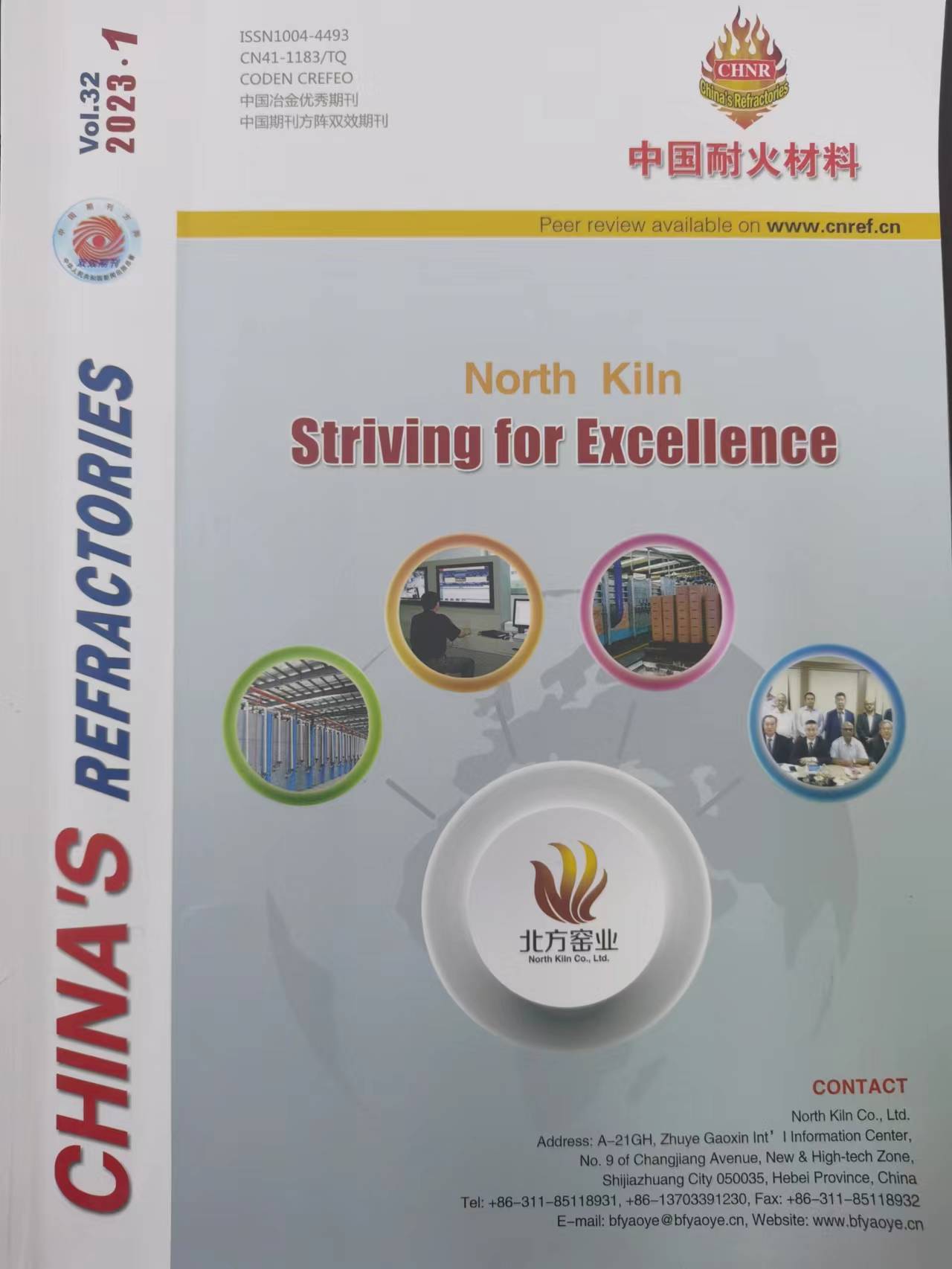
- Post-mortem Microstructural Study of Aluminous Refractory Brick Used in Channels of Blast Furnaces
- 作者:Ana Valéria de Sousa COSTA, Belmira Benedita de LIMA-KUHN, Antonio Renato BIGANSOLLI*
- 作者机构:Department of Chemical Engineering, Technology Institute, Federal Rural University of Rio de Janeiro, Seropédica 23851-970, Brazil
- 分类号:
- 卷号:
- 期号 : 2023 年, 第1期
- 页码:40 - 43
Aluminous refractory materials with high alumina contents are widely used in the steel industry, and the higher the alumina content, the higher the working temperature. Properties such as high refractoriness and thermal shock resistance lead these refractory materials to be used as channel linings of blast furnaces, where they are exposed to the attack by slag, molten steel, working cycles and sudden temperature changes between 25 ℃ (room temperature) and 1 520 ℃ (the temperature of molten pig iron). In this work, microstructural changes in post-mortem aluminous refractory bricks were investigated by apparent porosity, X-ray diffraction analysis (XRD), Fourier transform infrared spectroscopy (FTIR), scanning electron microscopy, and X-ray dispersion energy spectrometry (SEM/EDS). The results showed an increase in the apparent porosity and the bulk density and the presence of the phases mullite, sillimanite, alumina, and quartz in the post-mortem brick. Calcium and magnesium were not detected in the microstructure of the post-mortem brick, indicating that slags did not corrode these refractory materials. Therefore, the microstructural changes that occurred in the post-mortem bricks must be due to thermal cycling. In the X-ray diffraction (XRD) test, mullite, sillimanite, quartz, and α-alumina phases were identified. These results indicate that the aluminous refractory was obtained from sillimanite. In infrared spectroscopy (FTIR) it was possible to identify the vibration bands referring to the Si-O and Al-O bonds. The increase in the porosity is a result of cracks caused by work cycles at high temperatures and the temperature gradient to which the refractory was subjected during use. Through the micrograph it was possible to identify the presence of acicular mullite. The absence of magnesium and calcium in the microanalysis results by energy dispersed X-ray spectrometry (EDS) indicates that there was no infiltration by slag or liquid iron. These results indicate that the microstructural changes that occurred in the post-mortem aluminous refractory were of a thermal nature.
- Discussion on Abnormal Corrosion and M [296]
- Fabrication and Improving Properties o [233]
- Effect of H2O2 Addition on Anti-explos [73]
- Research on Corrosion Resistance of Ch [215]
- Preparation of ZrB2-ZrO2-SiC Composite [209]
- Effect of CaO/SiO2 Slag Mass Ratio on [37]
- Effect of TiO2 Addition on Properties [35]